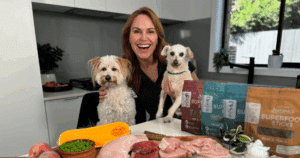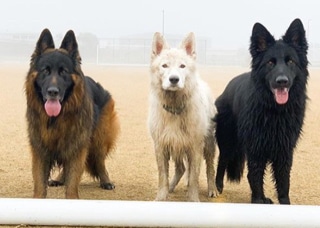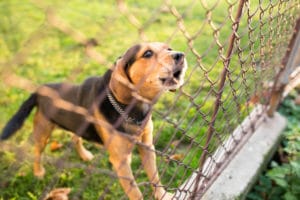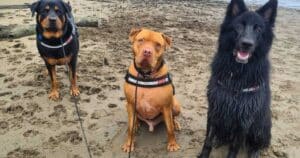

The German Shepherd is a descendant of the German herding dog originally used for sheep herding and guarding. Today they are commonly used for police and protection work and are generally considered one of the finest all-purpose workers.
German Shepherds are known for being courageous, confident, obedient, extremely faithful.
In general, they excellent companions, are great with older children other pets if introduced properly and well socialised, but can be wary of strangers.
They thrive on being around their family and do not do well being left alone in the backyard. Lengthy periods of isolation will create neurosis.
A large, muscular but agile dog of high intelligence, the German Shepherd has a double coat that can be medium or long in length.
The coat of a German Shepherd can vary from a mix of colours including black and tan, red, sliver and blue to all white or black.
Their expected lifespan is around 10-14 years.
Due to their high intelligence and eagerness to learn, this is a breed that must be kept mentally and physically stimulated.
They are happiest having a job to do and can be trained for multiple purposes, so incorporating a range of activities from obedience to scenting work, agility and interactive brain games are ideal.
While this breed is very robust, they do not respond well to negative reinforcement training techniques. They require consistent handling and good leadership.
They need an owner or family who have some experience and are willing to put in the training and effort required to keep them healthy and happy.
Given these guys love being around their family, they will be happy with a smaller living area inside with you and chilling out, but as they are a herding and working dog they should be getting a couple of hours exercise a day and have a big backyard you can play games with them in.
They require daily brushing and are a constant but light shedder, but they do lose their undercoat twice a year around spring and Autumn, so you’ll definitely need a vacuum.
Common health problems to be aware of in this breed including hip and elbow dysplasia so keeping them healthy with a balanced diet and within their ideal weight range to reduce pressure on their joints is vital.
Other conditions to watch out for include allergies such as flea allergy dermatitis and atopic dermatitis, environmental allergies, ear infections, and digestive problems including ‘bloat’, a twisting of the stomach, so it’s best to avoid exercise for several hours after a meal.
About the Author: Lara Shannon is a certified dog behaviourist and trainer, pet food nutrition specialist, Executive Producer and Host of Pooches at Play on Channel 10 and editor of Poochesatplay.com. Lara also runs her own dog training business in Melbourne’s Bayside area and is the Author of World of Dogs and Eat, Play, Love Your Dog

Dog Treat Naturals Superfood Sticks



How to deal with excessive barking in dogs

Poor gut health and dog behaviour issues


Get your paws on Lara Shannon’s best selling books ‘Eat, Play, Love (your dog) and World of Dogs.
Available in Australia, USA, UK and Canada.